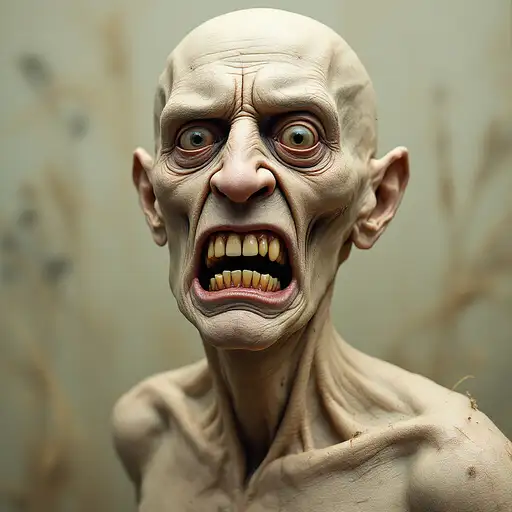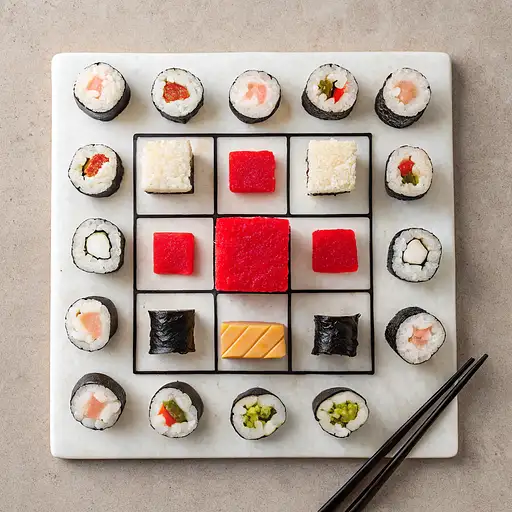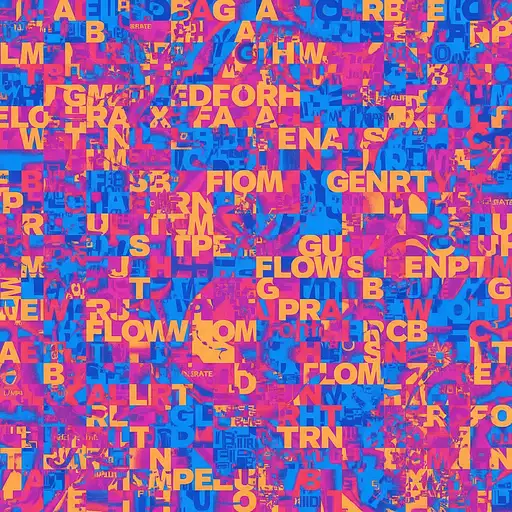


8 months ago
Abstract Full-Body Portrait of a Prostitute – Salvador Dalí (Late-Life Style, Singular Focus & Pure Surrealism) (Surrealism:1.7, Salvador Dalí late-life style:2.0, Dreamlike distortion:1.6, Hyperreal textures:1.5, Chiaroscuro contrast:1.4, Oil-painting brushstrokes:1.5, Organic fluidity:1.6, Metaphysical realism:1.4) A full-body surrealist portrait of a prostitute, painted in the unmistakable late-life style of Salvador Dalí, where dream logic dictates form and reality bends into its own subconscious reflection. She stands alone in the void, a lone figure frozen in motion yet melting into time itself. Her body is elongated but coherent, her limbs refined into one singular, fluid, organic motion, as if she is a sculpture made of half-formed candle wax, melting at the edges but never fully dissolving. Her face remains untouched by distortion, hyperreal and melancholic, eyes darkened with kohl, staring directly outward, unblinking, as if confronting time, fate, and the fabric of reality itself. A single strand of jet-black hair escapes from her carefully pinned curls, swaying in an invisible breeze. Her lips—painted a deep, blood-red—drip slightly at the edges, as if smeared by unseen hands, caught between seduction and sorrow. Her dress, a relic of the past, is a contradiction of luxury and decay, the hem transforming into thin wisps of smoke, curling and dispersing into the canvas. The fabric is stretched unnaturally, its folds elongating like the melted forms of Dalí’s classic clocks, one shoulder slipping in an eternal descent, never quite falling. The setting is an infinite, surreal landscape—a lonely street with no visible end, where shadows stretch longer than their owners, and the cobblestones appear to melt into liquid mercury. In the background, a large, antique pocket watch, twisted and partially submerged in the air, hangs frozen at an uncertain hour, its hands warped into elongated spirals. A single red rose, impossibly large and impossibly alive, hovers just behind her, its petals peeling away like fragments of forgotten love letters. The air feels thick, painted with visible brushstrokes, where light and shadow do not obey the laws of physics—instead, they bleed into one another, wrapping around her body in soft, liquid chiaroscuro, mimicking the curvature of a dream. She is not merely a woman but a symbol—of desire, of loss, of something slipping through time like sand through Dalí’s own fingers.

6 months ago
Create a terrifying random distressing image as a mixed media artwork. Create a full length image of an (emotional and weird cyborg creature) (in a bizarre alien dystopian environment:1.7). Futuristic ragged clothing. (Skin lesions as a storytelling element:1.7). In the style of surrealist expressionism, evocative colour scheme, (dreamlike atmosphere:1.7), (abstract and distorted forms:1.4). (Futuristic, dystopian, eerie, sad:1.8). (Evoke images which have never been seen before;1.9). The creature has ghostly cold eyes with terrifying pupils. (It has strange alien designs and markings tattooed into its face:1.9).

7 months ago
A monumental 6-meter-tall sculpture stands in a pristine, white-walled exhibition space. Its form is ambiguous yet resonant — suggesting a toy-like humanoid figure made of a single, inflated continuous surface. The geometry is mathematically generated and defined by the following parametric equation: x(u, v) = (1.5 + 0.3 \cdot \sin(5v)) \cdot \cos(v) + 0.2 \cdot \cos(2u) y(u, v) = (1.5 + 0.3 \cdot \sin(5v)) \cdot \sin(v) + 0.2 \cdot \sin(2u) z(u, v) = 0.6 \cdot u + 0.5 \cdot \sin(3v + \frac{\pi}{4}) for u \in [0, 3\pi] and v \in [0, 2\pi]. The resulting form undulates gently, swelling and contracting with bulbous, limb-like protrusions. It evokes the figure of a soft, abstract humanoid — one whose “head” is slightly larger than the lower forms, suggesting animation or presence without literal anatomy. Its skin is chrome-polished, with a translucent lavender glaze that reflects and distorts its surroundings. Subtle ridges on the upper surface imply crossed eyes without carving them, integrating symbolism through topological features. The figure leans forward slightly, balanced, as if breathing or listening. The feet-like base is wide and pressing softly into a terrazzo floor. The sculpture feels both digital and intimate — a monumental ballooned body born from mathematics, standing alone in a room filled with diffused white light and long, warped shadows. The face has two deep oval hollows, symmetrically set wide apart — not literal eyes, but alien symbols. Below them, a shallow, arc-shaped crease bends gently across the lower face, like a ghost of a smile. The geometry is playful but still and quiet — mixing a graphic clarity with an alien like face. The head is slightly oversized in proportion, giving the figure an animated presence. Reflections warp and flow across its curved face, refracting the viewer’s image within a facial field that feels curious but unknowable.

9 months ago
calabria in 1970 illustration in style of Die Brücke , sunny day beach crowded , emphasizing raw emotion and intense psychological depth. Use bold, non-naturalistic colors such as deep reds, blues, yellows, and greens to heighten drama and energy. Incorporate sharp, angular forms with exaggerated and jagged features, emphasizing distortion over realism. Apply rough and raw brushstrokes to enhance emotional impact. Integrate heavy black outlines and expressive, spontaneous line work to define figures and objects with a sense of urgency. The composition should embrace simplification and abstraction, reducing elements to their most essential forms while avoiding excessive detail. To add depth and texture, consider incorporating woodcut-style contrasts with stark black-and-white sections. The theme should explore urban alienation, social unrest, or existential angst, possibly incorporating elements of primitivism inspired by tribal and non-European art for a raw, unfiltered emotional power

8 months ago
An abstract, surrealist portrait of a human-like figure with exaggerated and distorted features, inspired by avant-garde and expressionist art. The subject resembles a middle-aged man with a pale, ashen skin tone and an elongated face. His mouth is unusually wide, open in an intense expression, showing irregular, oversized teeth. The eyes are deeply set, contributing to a haunting, emotionally charged expression. The neck and head appear unusually merged, creating a sculptural, fluid form that challenges typical anatomy. The skin texture is coarse and uneven, lending a weathered and abstract quality. The background is softly blurred, in muted earth tones like beige and light brown, with hints of dry, straw-like elements. Lighting is diffuse and moody, casting soft, uneven illumination across the subject. The overall composition conveys a surreal, thought-provoking atmosphere, blending discomfort and fascination through abstraction.

9 months ago
calabria in 1970 illustration in style of Die Brücke , sunny day beach , emphasizing raw emotion and intense psychological depth. Use bold, non-naturalistic colors such as deep reds, blues, yellows, and greens to heighten drama and energy. Incorporate sharp, angular forms with exaggerated and jagged features, emphasizing distortion over realism. Apply rough and raw brushstrokes to enhance emotional impact. Integrate heavy black outlines and expressive, spontaneous line work to define figures and objects with a sense of urgency. The composition should embrace simplification and abstraction, reducing elements to their most essential forms while avoiding excessive detail. To add depth and texture, consider incorporating woodcut-style contrasts with stark black-and-white sections. The theme should explore urban alienation, social unrest, or existential angst, possibly incorporating elements of primitivism inspired by tribal and non-European art for a raw, unfiltered emotional power

9 months ago
calabria in 1970 illustration in style of Die Brücke , sunny day beach , emphasizing raw emotion and intense psychological depth. Use bold, non-naturalistic colors such as deep reds, blues, yellows, and greens to heighten drama and energy. Incorporate sharp, angular forms with exaggerated and jagged features, emphasizing distortion over realism. Apply rough and raw brushstrokes to enhance emotional impact. Integrate heavy black outlines and expressive, spontaneous line work to define figures and objects with a sense of urgency. The composition should embrace simplification and abstraction, reducing elements to their most essential forms while avoiding excessive detail. To add depth and texture, consider incorporating woodcut-style contrasts with stark black-and-white sections. The theme should explore urban alienation, social unrest, or existential angst, possibly incorporating elements of primitivism inspired by tribal and non-European art for a raw, unfiltered emotional power

7 months ago
A highly realistic tabletop photograph of a conceptual sushi arrangement inspired by the work of Kazimir Malevich. The dish honors Suprematism through the composition of geometric, real-world ingredients — minimalist squares, rectangles, circles, and voids, arranged with stark asymmetry and spatial tension. Each sushi piece is handmade and slightly irregular, referencing Malevich’s abstract forms while remaining firmly in the realm of culinary craft. A single red tuna square placed off-center on a rice block mimics his red square on white A blackened nori rectangle floats beside a small cube of white daikon — contrast and negative space become the design A circle of pickled radish intersects a tamago rectangle, breaking the grid A void space is left intentionally blank between elements on the plate — emphasizing absence as much as presence One piece may be a cube of charcoal-grilled eggplant on rice, evoking the black square — textured, dark, earthy Color Palette: Muted, natural tones with a limited palette: ivory white rice, deep matte black nori, dark red tuna, pale yellow tamago, and light grey or beige plate. No artificial dyes or vibrant garnishes. The composition is more about form and proportion than flavor or ornament. Plate & Table Setting: Served on a matte porcelain square plate with ample negative space. The arrangement follows Suprematist principles — asymmetry, visual imbalance, gravity-defying placement. One piece may be positioned at the extreme corner. The table beneath is dark wood or concrete, referencing Malevich’s material seriousness. Camera View: Overhead or slightly angled — shot like a museum documentation photo, clean and quiet. Slight tilt or perspective distortion is allowed to reflect human error and tension. Lighting: Flat, soft ambient light. No dramatic shadows. Even illumination across all surfaces, mimicking natural daylight in a gallery or quiet kitchen. Surfaces should look honest, not stylized. Material Texture: Fish grain visible, slightly moist Nori uneven at the edges Knife cuts evident in egg and daikon Rice slightly loose and irregular Plate surface has minor scratches or glaze imperfections Mood: Silent, abstract, and cerebral. The image is a culinary still life — not about indulgence, but about pure form, balance, and the tension between presence and void. It should feel like a Suprematist painting you could eat, made by hand, with reverence for structure.

4 months ago
The Upstairs Void (Abstract & Haunting) Visual: A distorted perspective looking down a narrow, dimly lit hallway towards a half-open door at the end (grandmother's upstairs). The hallway walls are textured like rough, splintered wood (sticks). The floorboards are warped and stained a deep, unnatural blue near the doorway, pooling outward like spilled ink or cold liquid. Through the doorway is only pitch blackness (the void). Foreground (Bottom Corner): A single, pristine, bright blue ROXIE pill lies on the warped floorboards. It seems to be the source of the blue stain bleeding towards the black door. The blue stain subtly forms the shape of a collapsed figure as it spreads. Text: "STICKS & STONES" in large, crude, fragmented charcoal-gray letters (like stones roughly thrown), positioned vertically along the splintered wall or starkly across the top. Author name tiny, near the pill. Color Palette: Deep Umber/Splintered Brown (walls, sticks), Unnatural Electric Blue (stain, pill), Pitch Black (void), Charcoal Gray (text). Why it fits: Represents the specific location of death ("upstairs"), the isolation, the poison spreading (blue stain), the void of loss (black doorway). The splintered wood = sticks, the text = stones. The pill is small but the focal point of the disaster.

2 months ago
A low-poly 3D render of a majestic falcon soaring through a surreal, abstract landscape representing the passage of time. The falcon's wings are intricately designed with mechanical gears, metallic feathers, and glowing accents, blending nature and technology. The background features floating clock faces, swirling ribbons of light, and fragmented geometric shapes in shades of deep blue, gold, and silver, evoking a sense of movement and temporal distortion. Soft, ambient lighting highlights the falcon's sleek form and the reflective surfaces of its mechanical wings, creating a dynamic and artistic atmosphere.

2 months ago
Scene in Generative Typographic Art style, abstract composition made only of letters and words in different sizes and typographies, words repeating and distorting in geometric and organic patterns, contrasting colors in vibrant gradients, typographic forms overlapping and fragmenting as if they were particles, experimental and dynamic atmosphere, sensation of continuous flow between text and image, algorithmic and innovative aesthetics
